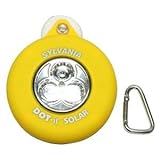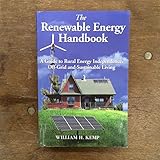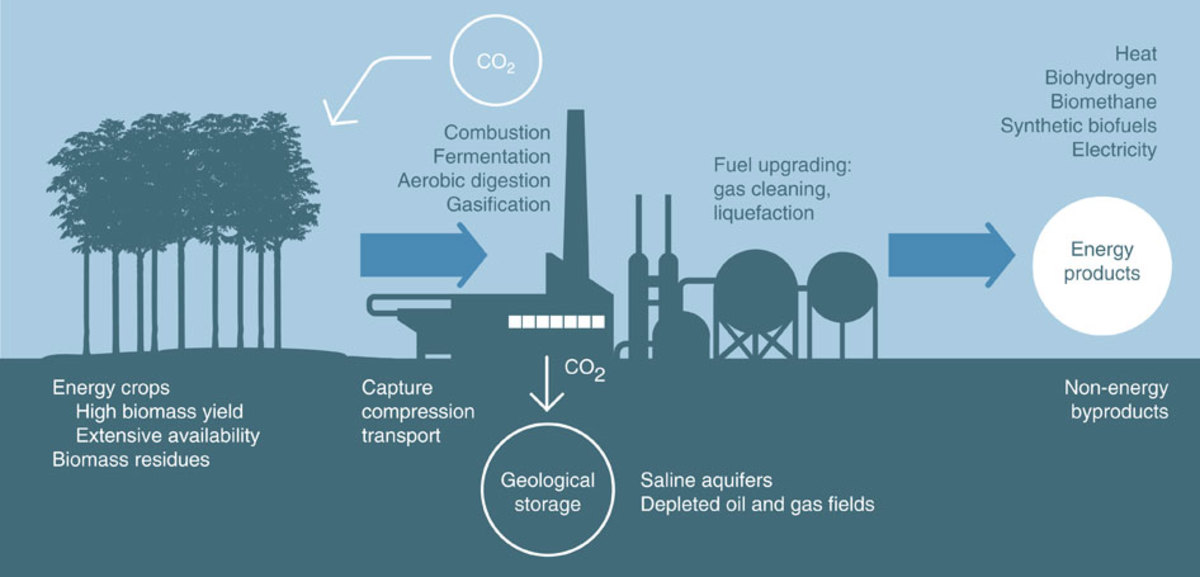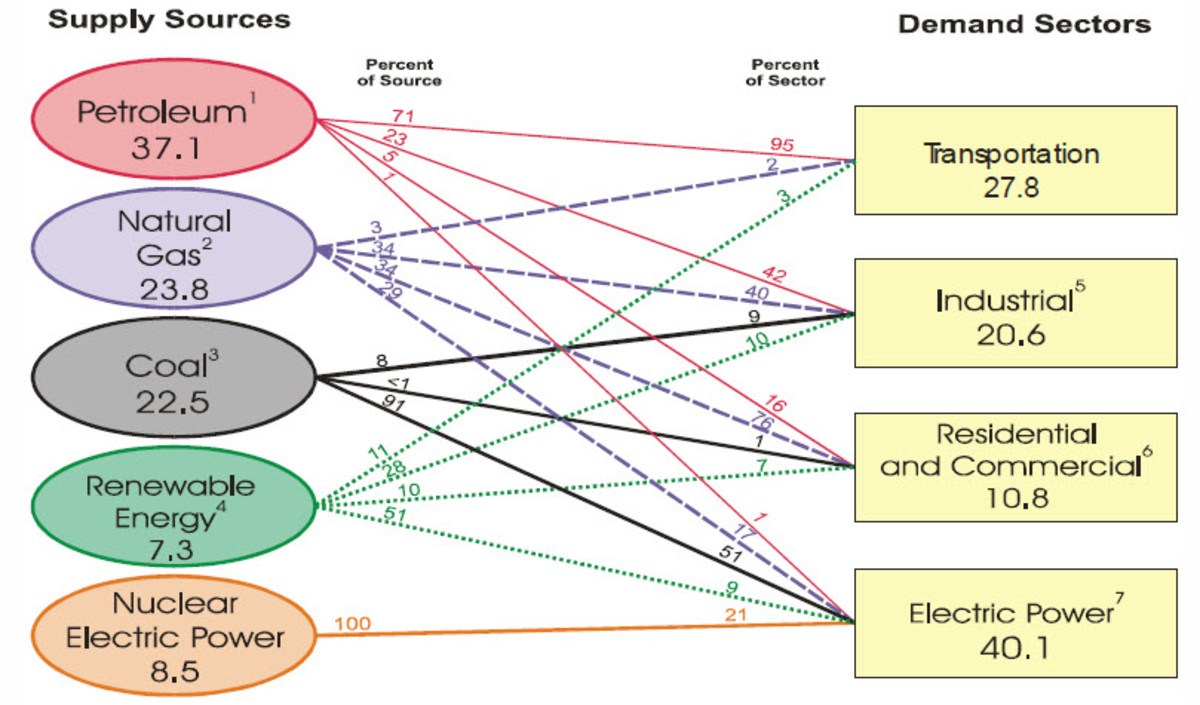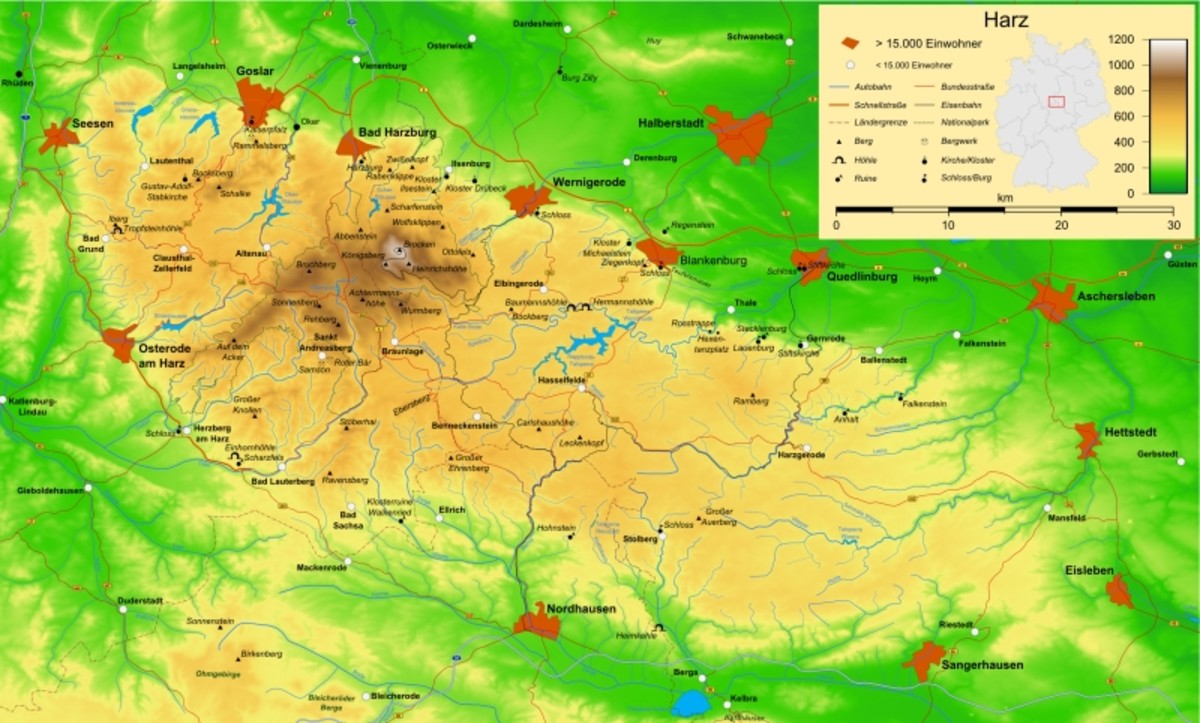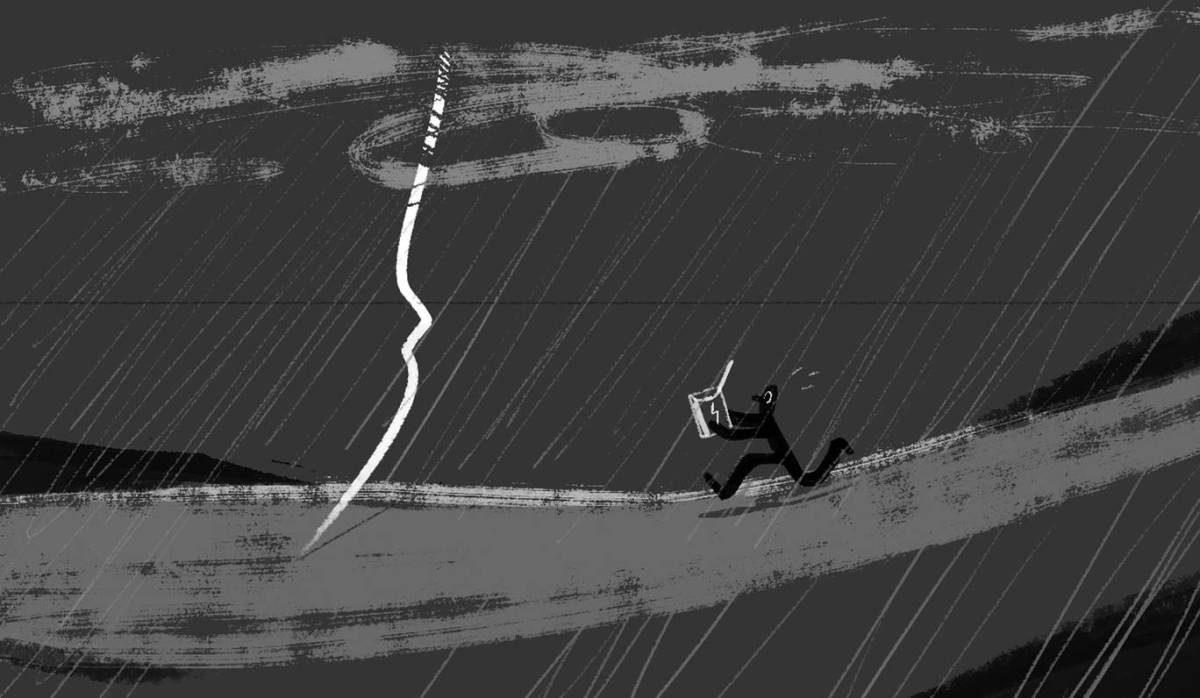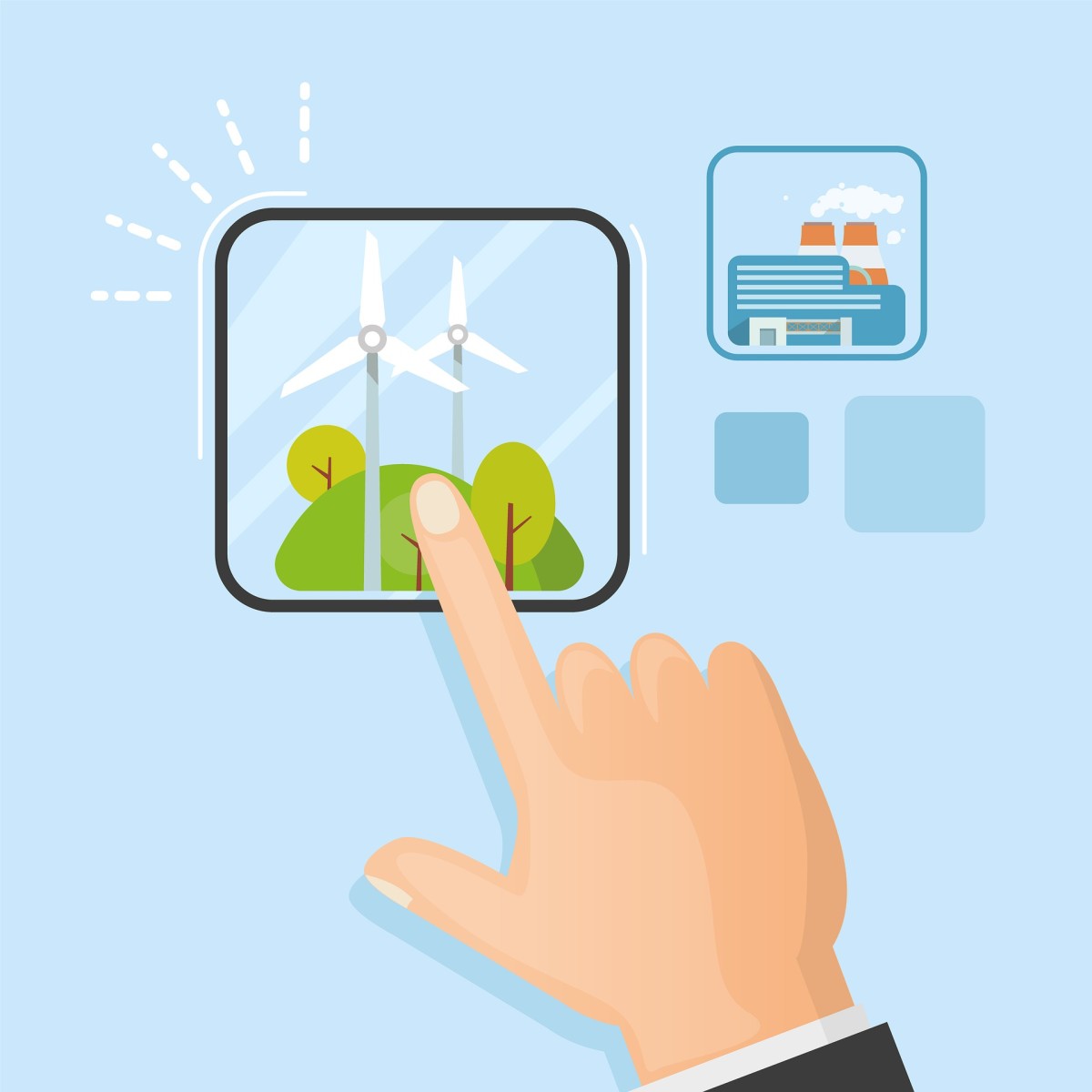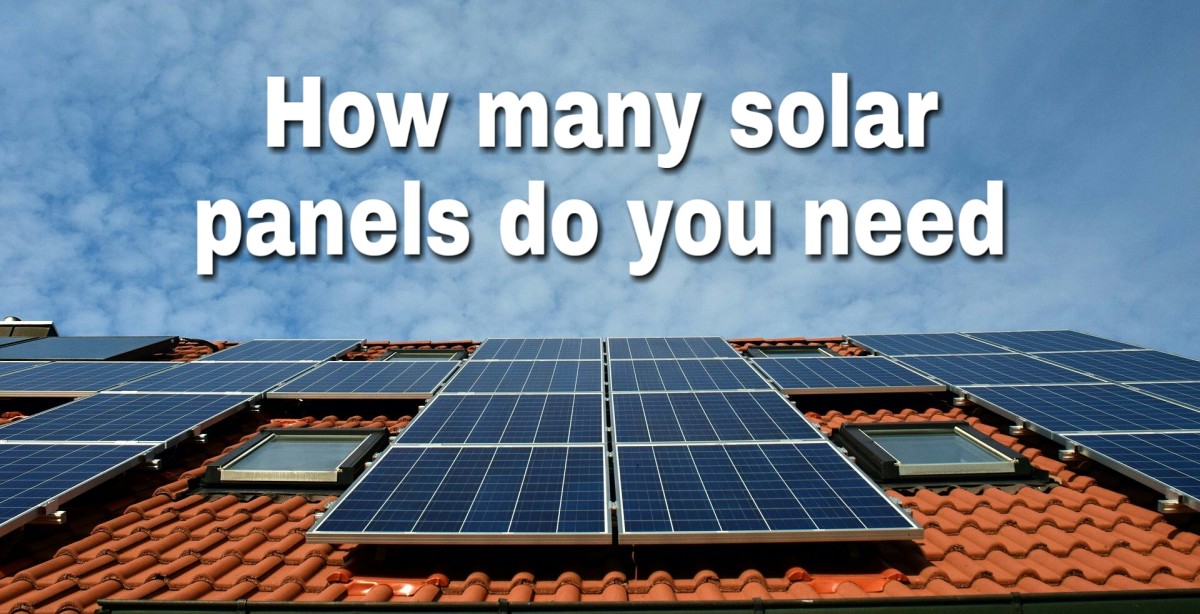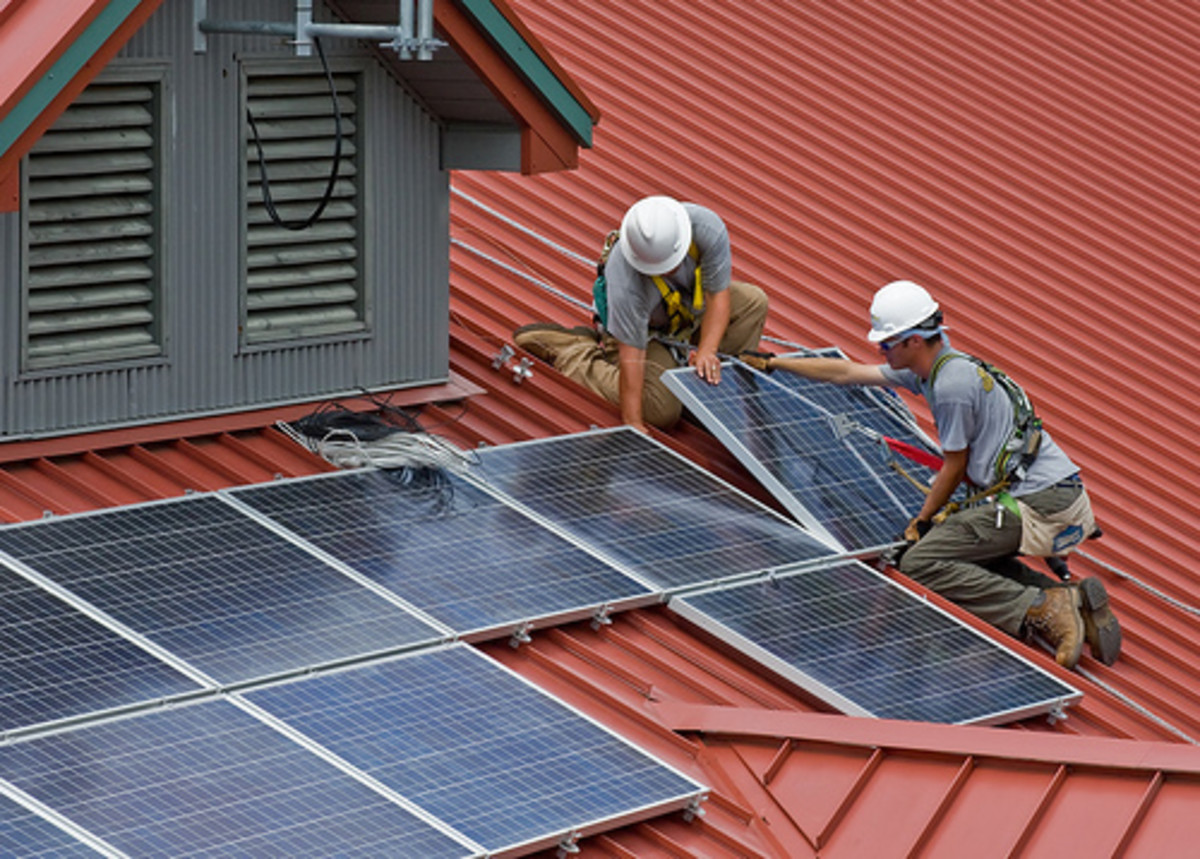Renewable energy technology: a guide to the 5 most common sources of sustainable & alternative power
An introduction to alternative energy
There are many reasons why people are interested in alternative or renewable sources of energy at the moment.
The first is the general, but not universal, consensus that increased human activity is leading to larger volumes of carbon dioxide in the atmosphere, and that therefore there is man-made global warming. There are concerns that the climate change may be disadvantageous.
Even those people who don’t accept that there is human cause for climate change, there is an awareness of the urgent need to consider and develop renewable sources of energy.
Fossil fuels are the main source of power for humanity today, and they are a limited resource. It is important to seek to develop sustainable long term alternatives, before the oil and the coal run out or become too expensive to be economically easily available.
Thirdly, there is the increasing issue of energy security. A lot of energy sources are located in countries which are politically or socially volatile, and this leads to many western countries feeling that their energy security is at risk.
Which sources of renewable energy are suitable for any one area or country depends largely upon the geography.
It’s not much use Switzerland getting excited about tidal power, nor is someone in Iceland going to get much central heating in the winter from solar panels on his roof.
This article looks at 5 important sources of renewable energy, how they work, how they are used, and both commercial and domestic ways of harnessing natural renewable energy.
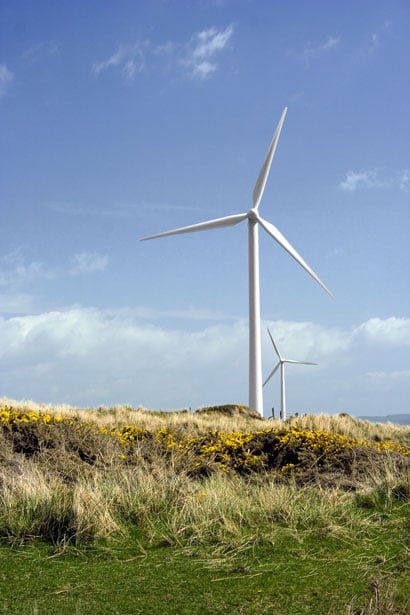
Wind power
Wind Energy is particularly important in Europe, with over half of commercially generated electricity in the world being generated here. The first commercial windfarm was built in Cornwall in the UK in 1991.
How Wind Power works
Wind turbines generate electricity by harnessing the power of the wind.
Wind turbines are developed from traditional windmills, but are different in appearance.
Wind turbines have either 2 or 3 blades, which rotate around the top of a metal tower.
Wind passes over the blades, which are curved in order to catch the wind. The blades are therefore moved, and as they rotate, they turn a shaft which goes into a gearbox inside the turbine.
The gearbox increases the rotation speed, and feeds the power to the generator which uses magnetic fields to convert rotational energy into electricity.
The power and energy produced by a turbine can either go into a national or local electricity grid, or in the case of micro turbines, be connected to a home’s power supply.
- Wind turbines and windfarms
A fantastic site which contains a large database of world-wide wind energy projects, and also pictures, facts, and links. - CRS report for Congress
A detailed American report entitled, "Wind Power in the United States: Technology, Economic, and Policy Issues"
Commercial Wind Farms
In terms of commercial windfarms, they can be located on land, or in the sea.
Offshore windfarm have advantages, in that the wind is not interrupted by buildings or hills, and there is also not alternative pressure on the land, which other people might wish to build on or farm. The wind tends to be more consistent offshore.
Building and maintaining offshore wind turbines can be more expensive.
Domestic Wind Turbines
Wind power is suitable for micro generation, which means the production of small amounts of electricity from wind power for local use.
They are particularly useful for houses or groups of houses or communities which are not connected to the national grid, because they are remote.
Such communities often use generators powered by oil or diesel, and wind turbines can reduce the fuel consumption of these generators.
Local domestic wind turbines can either be plugged straight into a house’s electricity system, or can generate power for batteries and battery appliances can then be used when needed.
- Renewable Energy UK
Anoverview of the the UK renewable energy industry.
Wind Power around the world
In the UK, wind power is now the largest source of renewable energy, contributing just under 3% of the United Kingdom’s electricity. This is a figure which is growing fast.
Wind energy generates a considerably higher percentage of electricity in other European countries. 19% of Denmark’s electricity is generated by wind turbines, 11% in Portugal and in Spain, and 7% in Germany and in Ireland.
The United States of America has the greatest installed wind power capacity, but it is a low percentage of total energy consumption. Only 0.4% of America’s electricity is generated by wind turbines.
There is a controversy in some countries about the installation of windfarms.
Some local communities don’t like them and planning laws are used by some people to try to oppose the installation of wind turbines either on a local domestic level, or in windfarms.
Half of all planning applications in England and Wales for wind turbines are refused. Other people like them, personally I think wind turbines have a majestic beauty, and the sight of them in motion is extremely attractive.
- Build your own solar panel
A fascinating guide to building and installing your own domestic solar panel.
Solar energy
Total solar energy absorbed by the Earth is more energy in an hour than the entire world uses in a year.
It is as much as energy per year as all fossil fuels available in the earth put together.
In many places in the world, it is now as cheap or cheaper than electricity generated via a fossil fuel. This is obviously a figure which varies as the price of fossil fuel energy is so volatile.
For new types of solar panel, the energy generated by a solar cell over time is between 10 and 32 times greater than the energy needed to produce and maintain the solar cells.
Where an individual installation falls in this range depends on the location where it is installed.
Commercial Solar Power
Solar energy can be used in order to cook or preserve food.This is not a new technology, but dates back to the mid 18th century.
Modern solar cookers use panels, mirrors and dishes to focus light onto the oven. These can be built and used on a large scale. The biggest solar cooker in the world in Rajasthan in India can cook up to 35,000 meals a day.
Solar panels can be used to convert the sun’s energy into electricity. These can be installed in large-scale electricity generation plants which contribute electricity to the national grid.
The largest sun powered electricity generator in the world is in Spain, and was built in October 2008.
There are also large solar plants in Germany, Portugal, Italy and Greece.
About 90% of solar energy produced worldwide is connected to national grid systems.
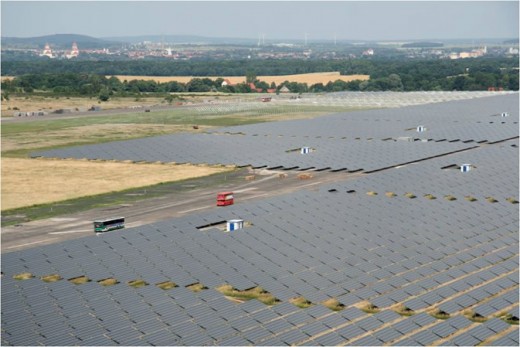
Domestic solar power
Solar panels are also very suitable for micro generation, and can be and are installed on many buildings in countries where sunlight is suitable and reliable enough for it to be useful.
As technology develops, solar power is increasingly cost effective.
Solar panels can easily be installed on new or existing domestic and commercial buildings, to contribute the cost of running a house, air conditioning, heating water, or other electricity needs.
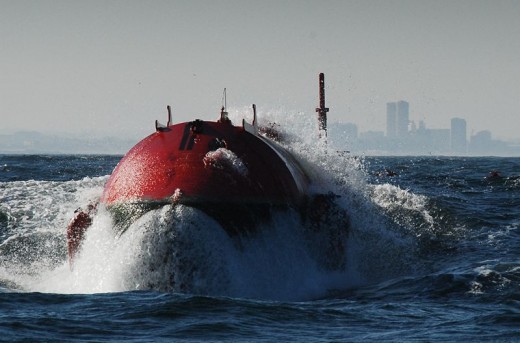
Tidal and wave power
Tidal and wave energy are similar in that both come from the sea, but one harnesses the regular and predictable tidal movement caused by the moon’s gravitational pull, and the other the slightly less predictable wave power generated by wind and storms.
Mills to grind corn or pound wool have a very long history, by the Middle Ages, they were frequently used in England and other parts of Western Europe.
Neither wave nor tidal power are significant contributors at present to renewable energy sources, but research and investigation into both continues.
- Severn Barrage
A detailed and fascinating article about the proposed Severn Barrage.
How tidal power works
There are 2 main ways in which tidal power can be used and converted into electricity.
A Tidal Screen installation makes use of the Kinetic energy of the water pushed by the moon’s gravity to power electricity generating turbines. This is a similar way of generating electricity to that used by wind turbines.
The second system used for tidal energy is a Barrage.
A Barrage is like a dam across the whole of a tidal river, or estuary, and these are not particularly popular at the moment. They produce a great deal of energy, but they are very expensive to build and maintain, and there are significant issues in relation to environmental impact, and impact on shipping.
Tidal estuaries or rivers big enough to make it worth installing a Barrage tend to be used by commercial ships and also for leisure boating. Tidal Barrages are pretty incompatible with either.
Because of the difficulties of building a permanent Barrage on a tidal structure, where the banks of the river or estuary are subject to water pressure and erosion, they are extremely expensive to build, and also have very high maintenance costs.
There is also a serious risk of Barrages affecting wildlife, in particular fish. They are particularly unsuitable for rivers used by migrating fish such as salmon.
The construction of Barrages also affects the flow of the water in and out of rivers, and the salinity of the river water is affected. This can also have an effect on wildlife.
The tidal streams systems are becoming more popular because they suffer from fewer of the environmental drawbacks of Barrage systems, and also use well researched technology similar to that used for generating wind power.
There is a large commercial tidal electricity generating Barrage on the Rance River in France. It was installed in the mid-1960s, and has produced electricity ever since.
Despite its search for alternative energy sources, however, subsequent French governments have not considered it worthwhile installing other such Barrages.
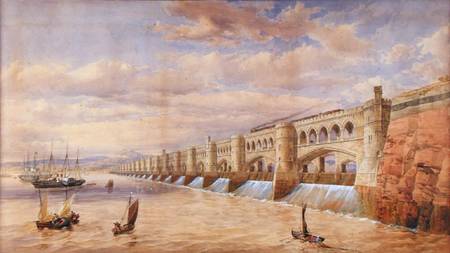
The Tidal Barrage Proposal for the River Severn
A tidal Barrage has long been considered for the River Severn in England and Wales.
The Severn Estuary is a significant tidal estuary, and would in many respects be suitable.
An example of the estuary’s tidal power is the Severn Bore, a tidal bore during which at high tides the rising tide water is funnelled up the estuary into a wave. These occur several times a year but particularly in spring.
A number of people try to surf the Severn Bore, and while it increases potential tide energy, it also presents drawbacks.
The first proposal for Barrages on the River Severn started in the mid 19th century.
A proposal by Thomas Fulljames in 1849 was to create a dam which would enable a railway bridge, flood protection, and a large and safe port for ships to moor in.
The tidal range in the Severn Estuary is vast, up to 52 feet at Spring tides. This means that the difference between high tide and low tide at its most extreme is 52 feet.
There have been lots of fairly serious studies into the prospect of energy generation from a Severn Barrage, there were 4 in the 1980s, and 3 more since then.
The latest effort is a feasibility study, from the British Government, which started in February 2008 and will last a couple of years.
The Severn Estuary is a special area of conservation, because of its unique ecology and wildlife habitats, and this creates extra opposition to the Barrage.
How Wave Power Works
Wave power is similar to tidal power, and is usually harnessed by devices similar to buoys.
These allow a wave to pass through the centre of the buoy, and use the energy to generate electricity.
The commercial use of wave power presents considerable technical challenges.
Waves are not constant, nor do they come in a constant direction. There is also a risk of strong waves damaging a wave farm system.
There are now some commercial wave farms.
The first was built in Portugal, and opened mid 2008. A wave farm is also due to be built in Scotland, and another one in Cornwall in England. The wave hub in Cornwall is expected to power about 8,000 households and save 320,000 tonnes of carbon dioxide over 25 years.
The UK, North and South America, South and Western Africa and Australasia are those countries who are most likely to be able to use wave power efficiently to generate electricity.
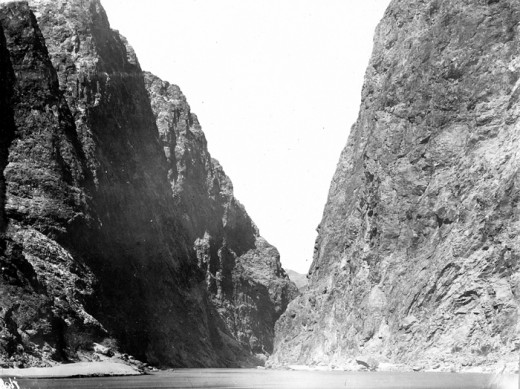
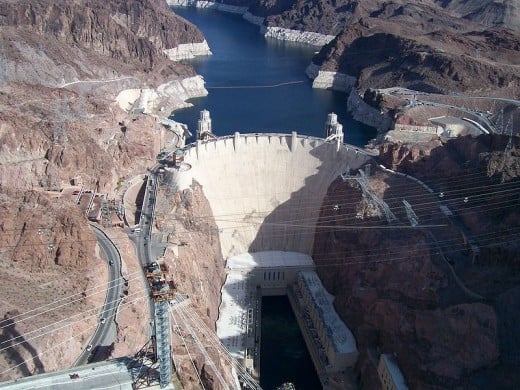
Hydroelectric energy
Hydroelectricity is one of the most common forms of renewable energy in the world. It makes up about a 5th of world electricity production, but is far from uncontroversial.
In order to generate hydroelectric power, in most cases a large dam is built across a river with significant potential energy. Water is then used from behind the dam to drive a turbine and generate electricity as it is released.
Hydroelectric plants have a long commercial history compared with most renewable energy.
They are relatively efficient, and although often expensive to build, recoup the cost and energy laid out to build them fairly swiftly after they come online.
They can also be used to create large lakes and ponds, which change and diversify ecosystems. They also allow agriculture to draw water for irrigation, and may help control floods.
Many environmentalists are, however, unhappy about hydroelectric dams. They significantly alter the flow of the river, and affect ecosystems and the salinity of water.
The areas flooded when building dams for hydroelectricity can also upset a lot of people who are displaced.
- Bureau of Reclamation: Lower Colorado Region - Hoover Dam
The official website of the Hoover Dam, with a lot of information, pictures, and links. - Millions forced out by China dam
At least four million people are to be moved from China's Three Gorges Dam area amid fears of a "catastrophe".
The Hoover Dam
The Hoover Dam is a good example of an early hydroelectric power station. It was finished in 1936.
When it was built, nothing nearly as big had ever been constructed from concrete, and that the engineers had to make a great of the technology up as they went along.
It was also dangerous, and about 120 people are thought to have died during the construction.
The Dam has had a very serious impact on the Colorado River Delta, where salinity has vastly increased as less water and sediment comes down the river. Local and native species of fish have also been very badly affected, and a number have been listed as endangered.
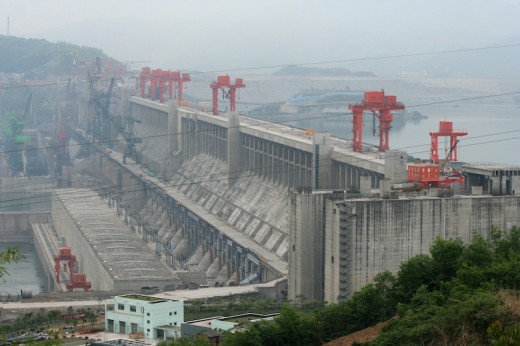
Three Gorges Dam
The Three Gorges Dam in China has been particularly controversial.
When it’s finished, in another 3 years or so time, it will be the largest power station in the world. Some aspects are already working, but the project as a whole is not yet finished.
It is estimated by the United Nations that the Three Gorges Dam will reduce coal consumption by about 34 million tonnes a year, causing the emission of 100 million tonnes of greenhouse gases less per year.
The Dam will also help control flooding, which is extremely problematic on the river.
Altogether, approximately 1.3 million people were forced to move, as their homes and farms would be covered by the waters held back by the Dam.
There have also been significant environmental consequences. As the river will carry much less silt down the stream, there is a significant risk that the Yangtze Delta will erode.
There is an also extremely serious issue in relation to earthquake activity in the area. If the Dam were to break, the consequences would be catastrophic.
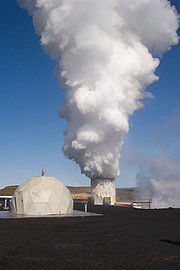
Geothermal energy
Geothermal energy comes from heat stored within the Earth.
As a percentage of worldwide electricity, it generates only 0.3%.
Where it is available however it produces far more than this. In 2008, there were 8 countries which used geothermal sources to produce more than 15% of their electricity, and top of the league is Iceland.
There are several different ways of harnessing heat stored within the Earth.
The most common is known as Dry Steam Plant, which uses steam from deep within the Earth to turn turbines and generate electricity.
The second most common is a Flash Steam Plant, which uses heat within the Earth to turn water into high pressure hot water and drive turbines.
The third most common, and the newest development, can use water or other fluids with lower temperatures.
Geothermal energy in Iceland
In 2008, over 30% of Iceland’s electricity came from geothermal energy. Iceland, being on a division between tectonic plates, has a great deal of geological activity, and is highly suitable for geothermal energy.
According to the Icelandic Energy Authority, 90% of all housing in Iceland is powered by geothermal electricity, and hot water supplied similarly.
Geothermal energy in Iceland is so cheap and easily available, that in several cities the roads and pavements are heated in the winter in order to keep them free of snow and ice by geothermal energy.


